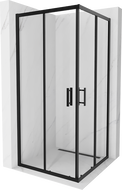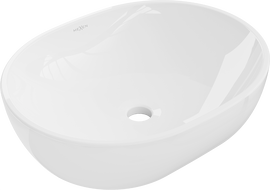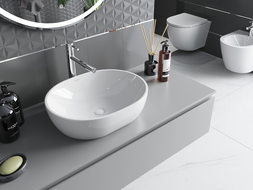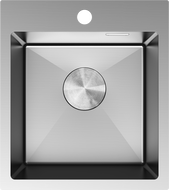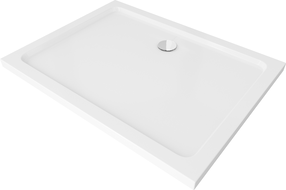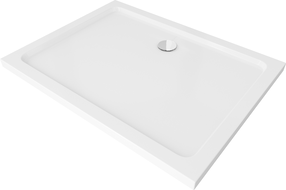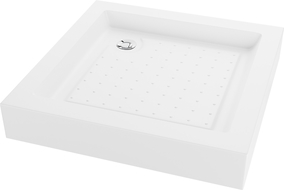
Drain - an inconspicuous but extremely important element of the water and sewage installation. Connected to the sewage riser, it is responsible for the efficient drainage of used water from the shower. Its proper installation prevents unpleasant smells and gases from the sewer from entering the bathroom. When planning the installation of a shower tray, it is worth investing in a high-quality product that ensures effective operation. Below we present tips to follow when choosing a drain for the shower tray.
Shower Drain - Important Selection Criteria
Shower drains differ in shape, size, and the type of material they are made from. The latter criterion is related to their quality and price. It is important for the shower drain to be made from a durable material that is resistant to rust. This will protect us from the problem of leaks, which can occur in the case of excessive wear and tear on the device.
It is also necessary to match the shape and size of the drain to the device being installed. This mainly depends on the location and method of installation, the height of the tray, the diameter of the drain, its associated throughput, and the possibility of connecting an overflow. The way of draining the drain is also important, as due to hair, soap scum, etc. that accumulate there, it requires frequent cleaning. Read what to pay attention to and choose a model that will work reliably and serve you for a long time.
What Height Should the Shower Drain Have?
Drains have different heights – from about 40 mm to over 100 mm – which allows them to be adapted to the depth of the shower tray and the way the sewage installation is conducted. The height of the drain we intend to buy depends on the installation location and the height of the device it is intended for. Our task is to choose a shower drain that will fit under its bottom or under the floor surface. For flat shower trays or walk-in showers, drains with the lowest possible height, e.g., 4 cm, should be selected. It may happen that the installation of the tray will require breaking the floor to accommodate the entire drain. Therefore, it is a good idea to plan the purchase of individual elements already at the stage of designing the bathroom, i.e., planning the type of shower cabin and the model of the shower tray.
A high shower tray, with a depth exceeding 21 cm, can be equipped with a slightly taller drainage set with an overflow system similar to that installed in a bathtub. Turning or pressing the tile in the overflow closes the drainage of water from the tray. This is especially useful in bathrooms that only have a shower and not a bathtub. The design of modern drains guarantees protection against water backflow and the release of unpleasant odors from sewer pipes.
Throughput of the Shower Drain
The throughput of the drain plays a very important role in its selection. It should be adjusted to the performance of the faucet or shower panel, taking into account the amount of water emitted by the devices installed in the shower cabin. Shower drains significantly differ in throughput. It can range from 30 to over 70 l/min. The amount of wastewater collected does not depend on the height of the water seal but on its design and the size of the drain opening. Standard openings have a diameter of 50 mm or 90 mm. All shower trays, especially flat ones, must have an extremely efficient system for disposing of used water. Otherwise, there is a risk of flooding the bathroom.
If we plan to install a rain shower in the shower cabin, we must take into account its size, and consequently the amount of water used and the possibility of draining it. Large rain showers can use even 40 l of water per minute, therefore a drain with a larger capacity will be necessary. For smaller rain showers that emit about 18 l of water per minute, a drain with a diameter of 50 mm is sufficient. Drain systems with higher throughput are also required for cabins that include hydromassage. It is also worth considering a similar drain in high shower trays, which can be used as a small bathtub.
Does the Way of Cleaning the Drain Matter for Choosing a Specific Model?
We all know that the drain of the shower tray and the drain itself are places where numerous impurities accumulate. To ensure proper drainage of wastewater and optimize throughput, it is necessary to take care of the correct flow of the sewage system. Since the shower or bathtub drain is located under the casing and thus in a hard-to-reach place, it is best to choose a model whose cleaning is uncomplicated. An example of such a device is the so-called bell siphon. It has a low installation height, so it can be used even in very low shower trays. However, the most important thing is that this type of drain can be disassembled and cleaned from above by removing successive elements.
A recommended option is the pipe drain, also known as a self-cleaning drain. It consists of a single component, a pipe bent in the shape of the letter "U" or "S". In this model, due to its horizontal construction, dirt that could clog the drain settles less often. Any water poured through it causes cleaning. An additional advantage of this type of drain is their large capacity. Because they hold a larger amount of water, they are more resistant to drying out. They usually have a smaller cross-section than the pipe system, so everything that can get through them will not get stuck further along the line.

